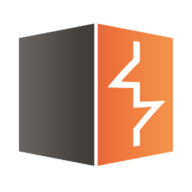

PortSwigger Burp Suite Professional and OpenText Core Application Security are leading solutions in application security testing. Burp Suite seems to have an advantage in pricing and support, while OpenText Core Application Security stands out for its comprehensive features.
Features: Burp Suite is known for its intuitive manual testing tools such as Repeater and Intruder, along with extensive support for community plugins via the BApp store. It also offers notable automatic scanning and reporting functionalities. OpenText Core Application Security, on the other hand, integrates well into development pipelines, offering extensive application coverage and thorough vulnerability insights with both static and dynamic scanning support.
Room for Improvement: Burp Suite users have pointed out issues with false positives and suggested improvements in REST API scanning. Additionally, enhancements in documentation, stability, and reporting are noted. Users of OpenText Core Application Security suggest improvements in dynamic testing speed, reducing false positives, and better presentation of vulnerability data. Its integration with project management and deployment pipelines could also be enhanced.
Ease of Deployment and Customer Service: Burp Suite is primarily deployed on-premises, making it suitable for organizations with a strong local infrastructure, although users have mentioned a need for improved documentation and integration. OpenText Core Application Security supports both on-premises and cloud solutions, providing flexibility for different environments. Both solutions offer commendable technical support, with particular praise for the responsiveness of the PortSwigger team.
Pricing and ROI: Burp Suite offers competitive pricing with different licensing options including a free community version, appealing to smaller businesses due to its cost-effectiveness. Some users suggest improvements in licensing flexibility. OpenText Core Application Security has a higher initial cost but is valued for its comprehensive features and integration capabilities, making it worthwhile for enterprises seeking a wider scope in application security. Both solutions report positive ROI, with Burp Suite's market recognition and efficiency being notable.


OpenText Core Application Security offers robust features like static and dynamic scanning, real-time vulnerability tracking, and seamless integration with development platforms, designed to enhance code security and reduce operational costs.
OpenText Core Application Security is a cloud-based, on-demand service providing accurate and deep scanning capabilities with detailed reporting. Its integrations with development platforms ensure an enhanced security layer in the development lifecycle, benefiting users by lowering operational costs and facilitating efficient remediation. The platform addresses needs for intuitive interfaces, API support, and comprehensive vulnerability assessments, helping improve code security and accelerate time-to-market. Despite its strengths, challenges exist around false positives, report clarity, and language support, alongside confusing pricing and package options. Enhancements are sought in areas like CI/CD pipeline configuration, report visualization, scan times, and integration with third-party tools such as GitLab, container scanning, and software composition analysis.
What features define OpenText Core Application Security?Industries like mobile applications, e-commerce, and banking leverage OpenText Core Application Security for its ability to identify vulnerabilities such as SQL injections. Integrating seamlessly with DevSecOps and security auditing processes, this tool supports developers in writing safer code, ensuring secure application deployment and enhancing software assurance.
Burp Suite Professional, by PortSwigger, is the world’s leading toolkit for web security testing. Over 52,000 users worldwide, across all industries and organization sizes, trust Burp Suite Professional to find more vulnerabilities, faster. With expertly-engineered manual and automated tooling, you're able to test smarter - not harder.
PortSwigger is the web security company that is enabling the world to secure the web. Over 50,000 security engineers rely on our software and expertise to secure their world.
We monitor all Application Security Tools reviews to prevent fraudulent reviews and keep review quality high. We do not post reviews by company employees or direct competitors. We validate each review for authenticity via cross-reference with LinkedIn, and personal follow-up with the reviewer when necessary.